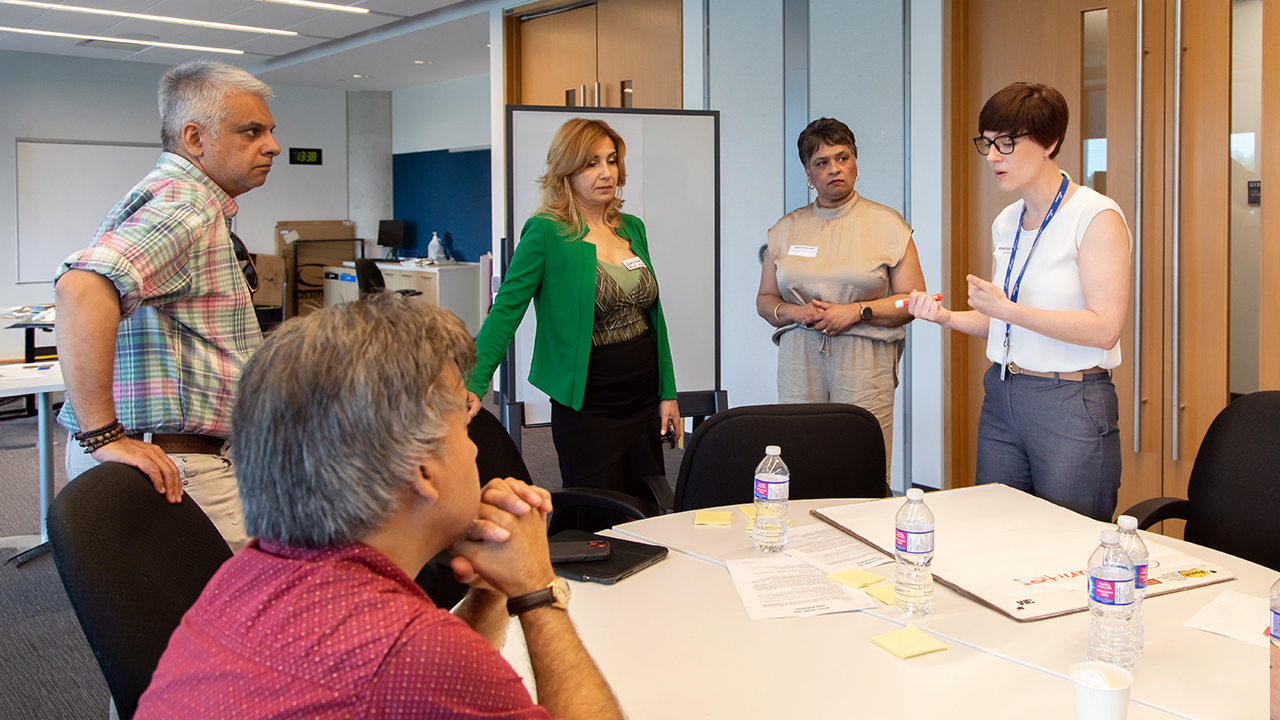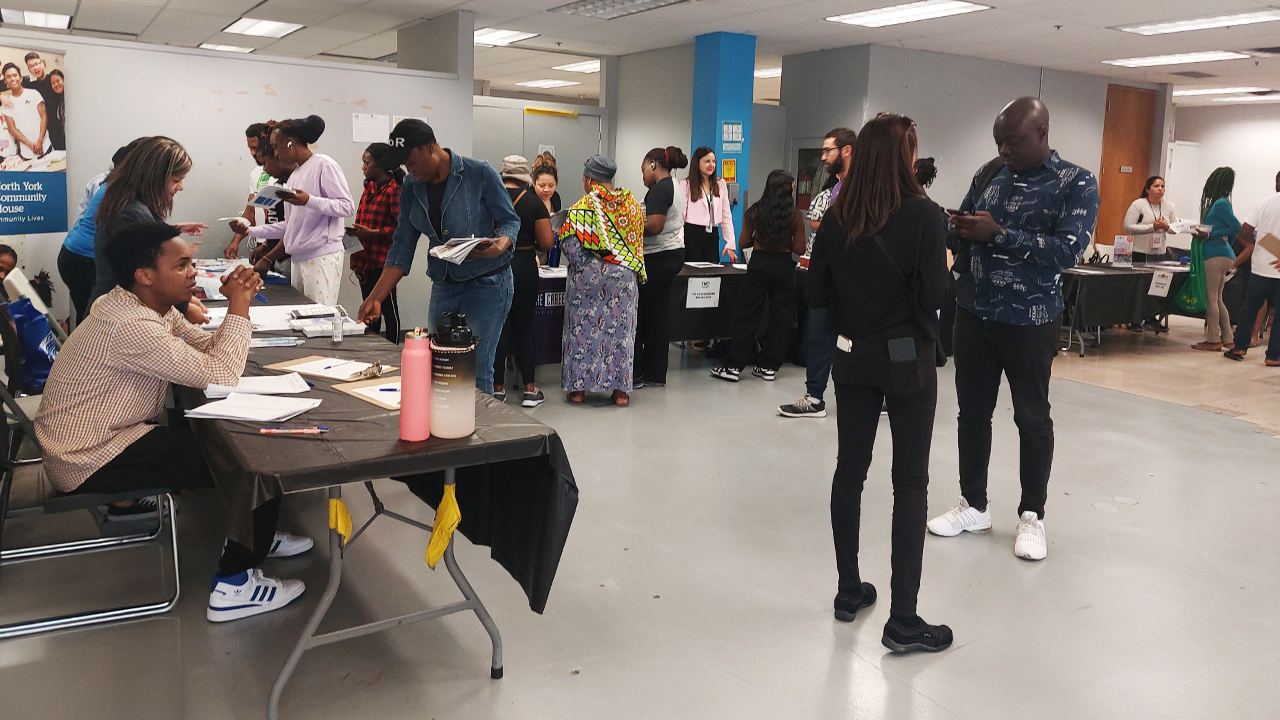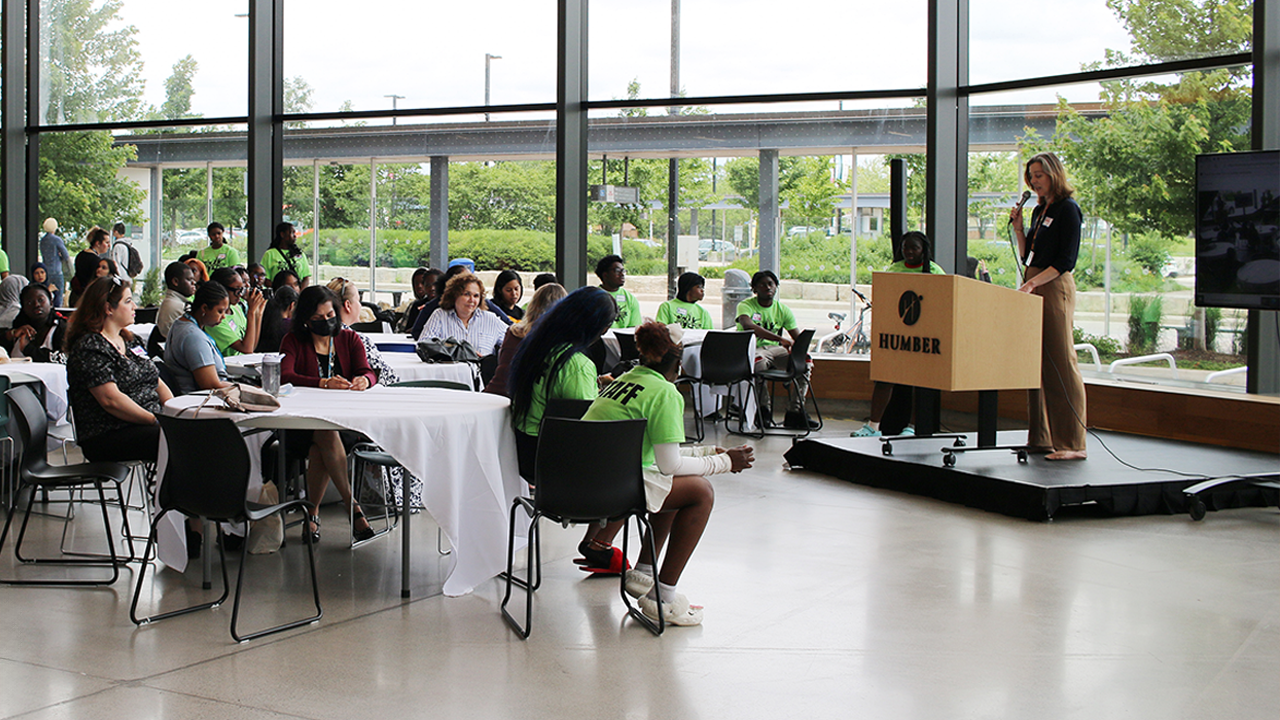
Collaboration in action
The challenges facing the GTA are many. People are struggling to put food on the table. Youth are seeking community and connection. Newcomer families are struggling to find places to live in a challenging rental market. But what if there was a way for local organizations to work together, quickly and effectively, to respond to these kinds of issues?
Our Community Coordination Tables are doing just that!
At United Way Greater Toronto, we know that solving poverty and its interconnected issues requires collective action. That’s why we lead Community Coordination Tables — a best-in-class model for coordinating local agencies and resources, bringing together more than 500 organizations across Peel, Toronto and York Region to tackle pressing challenges head-on.
In the early days of the COVID-19 pandemic, we created these tables as an urgent response in a time of crisis. We expanded their scope in 2022 and they’ve evolved into vital social infrastructure for our communities, enabling us to hear from agencies about issues emerging across the region. And most importantly, they allow for rapid, coordinated responses to urgent needs.
“Community Coordination Tables bring together a wide range of partners — from local government and healthcare networks to colleges, universities and community agencies — creating a space for real collaboration,” says Alex Dow, Director, Neighbourhood Solutions Strategy, United Way Greater Toronto. “Whether addressing housing needs or launching food security initiatives, the strength of these tables is in their agility. They allow communities to move quickly, adapt to emerging challenges and stay ahead of the curve.”
These collaborative forums expedite resources, respond to urgent and emerging needs, and foster resilience across the GTA, ensuring communities receive timely and effective support. The involvement of local governments means that issues and needs can be escalated for more systemic responses.
How do Community Coordination Tables work in community?

Community Coordination Tables are dynamic forums where community agencies and local government representatives collaborate to address pressing challenges. These tables function as strategic coordination networks, facilitating the rapid mobilization of resources and services to where they are needed most.
Currently, there are 15 Community Coordination Tables, each focused on a geographic area or specific population — such as newcomers and Black communities — ensuring that initiatives are locally relevant and culturally responsive.
The tables create an ecosystem of shared knowledge and action that has impacted thousands of residents, demonstrating the power of coordinated responses to urgent community issues.
Each table follows a structured approach:
- Identifying needs: Regular discussions with frontline organizations to help pinpoint emerging concerns
- Coordinating efforts: Sector leaders strategize on how to align resources to maximize impact
- Delivering timely solutions: Action plans are swiftly implemented, ensuring critical support reaches those who need it most
Poverty is complex, affecting every aspect of life — from access to food and housing to mental health and economic opportunity. By collaborating at scale with government and convening diverse key players, like local and city-wide social service agencies, we can more quickly develop comprehensive and impactful solutions.
Driving change in local communities

Community Coordination Tables drive local responses that are tailored to their communities. Here are just a few examples of what that work looks like in action and how these tables address complex issues, from food security to mental health to climate resilience:
- For Black Creek Humber Summit, addressing food insecurity was a key priority, leading to a partnership that streamlined food access. Local organizations and volunteers ensured vulnerable residents and families had consistent and equitable access to nutritious, culturally appropriate meals.
- In North Etobicoke, a youth mental health study, conducted in collaboration with Humber College, focused on understanding the pandemic’s impact on young people. The findings helped tailor mental health interventions, directly improving access to critical services for youth in the neighbourhood.
- In North York, a pilot pop-up mobile housing supports hub offered wraparound services in spaces where housing insecure residents were gathering, providing easier access to affordable housing options, as well as support to address other issues, including mental health, settlement and employment support.
- A unique pilot project in collaboration with the Canadian Red Cross and the City of Toronto is underway in East York Don Valley and North Etobicoke, with agencies assessing emergency preparedness at a time when climate-related disasters and other urban shocks and stressors have become more common. Emergency readiness, like developing tools and processes, plays a pivotal role in ensuring more equitable support for Toronto’s most vulnerable residents in times of crisis.
- The York Region Seniors Table focuses on seniors’ well-being. This initiative has strengthened safety nets for older adults by ensuring better access to health, housing and social services.
- Tables in north-west Toronto, alongside the Black Resilience Cluster, connected African asylum seekers with settlement, employment, housing and mental health services, like helping secure temporary and permanent housing, legal support and job training. United Way pledged $250,000 in grants in 2023 to support the leadership of Black-led community service organizations working on the frontlines with African refugee claimants. And the work continues, with a soon- to-be released United Way research report identifying challenges asylum seekers are facing to inform future work on service planning and supports.
The work of Community Coordination Tables continues

Community Coordination Tables represent a groundbreaking model of collaboration, and they can swiftly pivot to address pressing issues and evolve with the needs of the community. This adaptability is crucial, as is the information and knowledge sharing that they facilitate between agencies, United Way and local governments.
They have redefined how communities come together to solve challenges facing residents. By fostering deeper understanding and collaboration in response to emerging needs, they ensure resources and support reach the people who need them most.
As we continue to champion this model, the impact of Community Coordination Tables will only grow — as will our commitment to strengthening communities and transforming lives for generations to come. Any way we can.